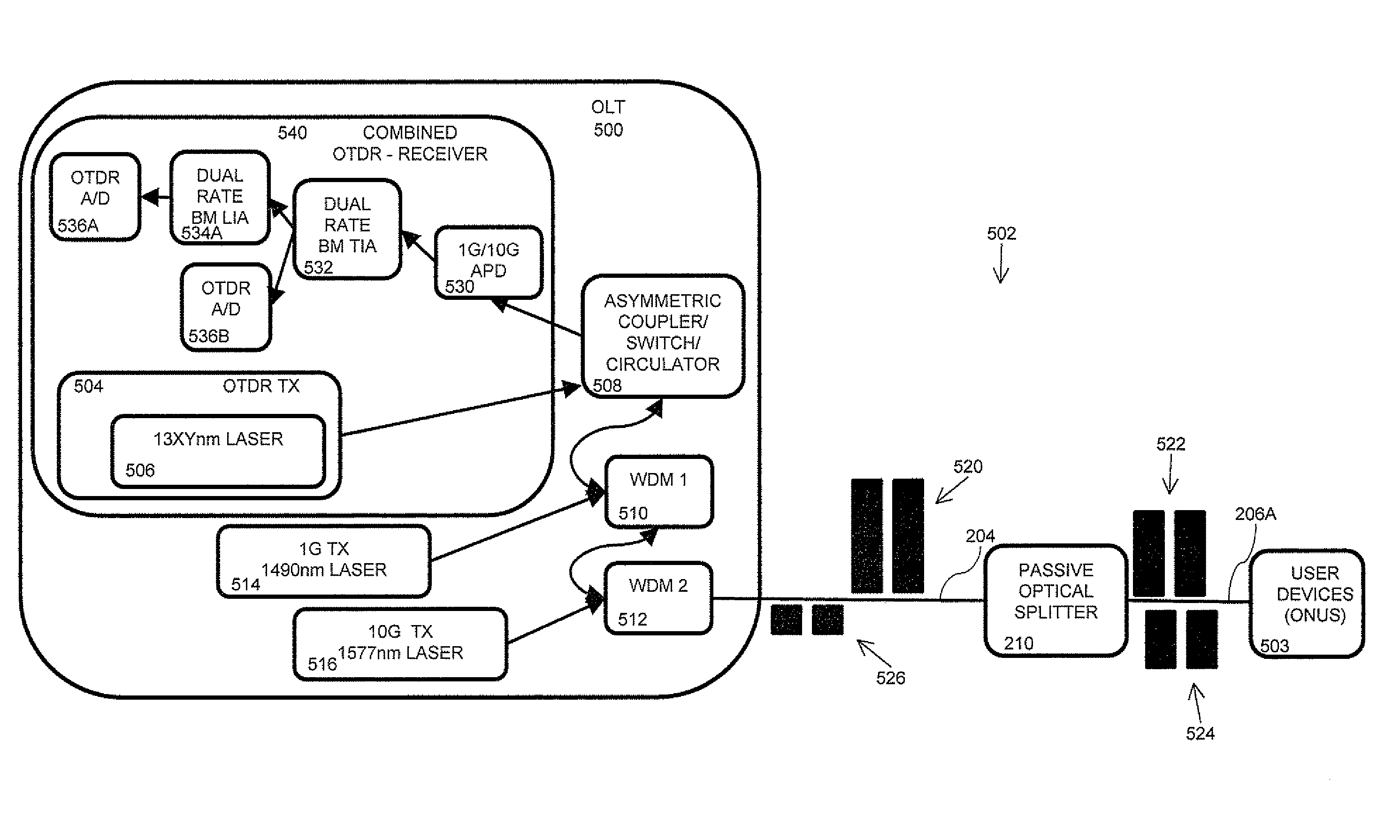Passive optical network (PON) in-band optical time domain reflectometer (OTDR)
a passive optical network and reflectometer technology, applied in the field of sensing, can solve problems such as difficult to see what happens after a split, difficult to implement otdr in pons, and difficult to locate failures or degradations of physical plants
- Summary
- Abstract
- Description
- Claims
- Application Information
AI Technical Summary
Problems solved by technology
Method used
Image
Examples
Embodiment Construction
[0045]The principles and operation of the system and method according to the present embodiment may be better understood with reference to the drawings and the accompanying description. The present embodiment is a system for performing analysis of links, in particular optical time domain reflectometry (OTDR) of PONs. The system and method facilitate testing of links more frequently, while maintaining service for users, and at a lower cost than conventional solutions.
[0046]In one embodiment, an OTDR test uses a network's communication protocols with the data signal transmission wavelength to perform OTDR testing on a link, referred to as in-band OTDR testing. In other words, an OTDR signal (probe pulse) is handled by the network's communication protocol like a network data signal. A network device is typically operationally connected to at least one user device via a link. When an OTDR measurement is to be performed, the network device notifies the user devices to halt transmission o...
PUM
 Login to View More
Login to View More Abstract
Description
Claims
Application Information
 Login to View More
Login to View More - R&D
- Intellectual Property
- Life Sciences
- Materials
- Tech Scout
- Unparalleled Data Quality
- Higher Quality Content
- 60% Fewer Hallucinations
Browse by: Latest US Patents, China's latest patents, Technical Efficacy Thesaurus, Application Domain, Technology Topic, Popular Technical Reports.
© 2025 PatSnap. All rights reserved.Legal|Privacy policy|Modern Slavery Act Transparency Statement|Sitemap|About US| Contact US: help@patsnap.com



